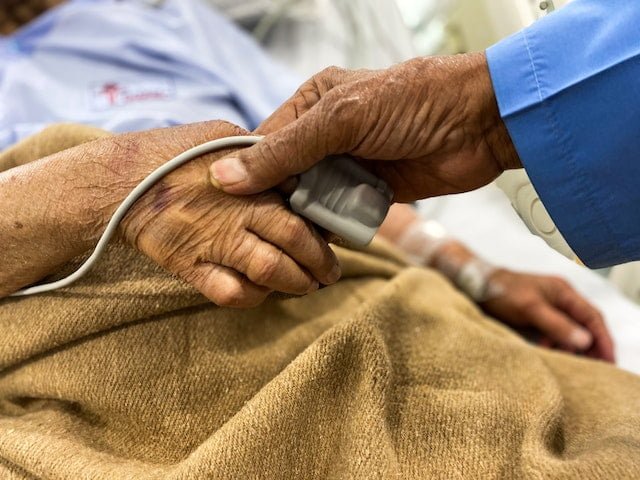In the world of healthcare, one of the most essential tools for individuals with health concerns is a medical alert device. Whether you are someone managing a chronic condition, living alone, or a caregiver for a loved one, these devices are designed to offer peace of mind and prompt assistance in emergencies. However, owning a medical alert system is not enough; regular testing is crucial to ensure that it functions correctly when you need it most.
What is a Medical Alert Device?
A medical alert device, often referred to as a medical alert system or personal emergency response system (PERS), is a wearable device equipped with a button that connects you to emergency services. These systems are often used by individuals who have health conditions such as heart disease, diabetes, or those who are at risk of falling. Some devices include features like fall detection, GPS tracking, and medication reminders.
Why Regular Testing Matters
A medical alert device is only as reliable as its functionality. Regular testing is necessary to ensure that the device’s components—such as the base unit, battery, buttons, and connection to the monitoring center—are all working properly. Many people assume their medical alert device is functioning correctly, but there could be issues that may go unnoticed until a critical situation arises.
Here are some key reasons why regular testing is essential:
- Ensuring Reliability: Over time, devices can experience issues like battery depletion, poor connections, or wear and tear. Regular testing allows you to spot these issues before they become problems during an emergency.
- Battery Life: Most medical alert systems are powered by rechargeable batteries, which lose their efficiency over time. Testing the device regularly helps you ensure the battery is still holding a charge and provides enough power during an emergency.
- Connection and Signal Strength: If your device is not properly connected to the monitoring center or experiences signal interference, it will be unable to send distress signals. Regular testing confirms that your system has a strong and reliable signal.
- Peace of Mind: Knowing that your device is functioning as expected allows you and your loved ones to feel confident in the system’s ability to provide help in a crisis.
Steps to Test Your Medical Alert Device
Testing your medical alert device is simple and can be done in just a few minutes. It’s best to follow the manufacturer’s instructions for your specific system, but here’s a general guide on how to test your device:
1. Read the Manufacturer’s Instructions
Before starting the test, take the time to review the user manual. Each device may have different instructions, and it’s important to follow them carefully. Some manufacturers even have specific days or times for testing, especially if you are using a subscription-based service that includes professional monitoring.
2. Test the Base Unit and Connection
The base unit is the heart of your medical alert system, usually connected to your home phone line or Wi-Fi. First, check that the base unit is plugged in properly and that there are no loose connections. Check the device’s display or indicators to confirm that it’s powered on.
Next, test the signal strength between the base unit and the device’s emergency button. This can be done by moving around your house or apartment and pressing the button. Some devices have an indicator light or sound that will confirm the device is receiving the signal. Others may require a more thorough test, including checking the phone line or Wi-Fi connection.
3. Check the Emergency Button
Whether you have a wearable pendant, wristband, or belt clip, the emergency button is the key component of your medical alert system. Make sure the button is easy to press and accessible at all times. It should be comfortable to wear, and it should not have any defects such as cracks or broken parts.
Once the button is secure, press it for a few seconds to activate the device. Some systems will emit a test tone or flash a light to confirm the button was activated. You may also receive a call from your monitoring center to ensure they received the alert.

4. Test the Fall Detection Feature (If Applicable)
If your medical alert device has fall detection capabilities, it is especially important to test this feature. Fall detection systems use sensors to detect unusual movements and falls, then automatically alert the monitoring center. However, these sensors need regular testing to ensure they are calibrated and functioning correctly.
You can test fall detection by performing activities that simulate a fall, such as gently dropping to the ground or mimicking the motion of a fall. Some systems may also allow you to test this feature remotely by calling the monitoring center directly. Always follow the specific guidelines for your device to avoid false alerts during regular testing.
5. Check Battery Levels
Batteries are one of the most common sources of failure for medical alert devices. Even rechargeable systems will lose battery power over time. To prevent any disruptions, check the battery level of your device during your regular testing.
Most medical alert systems have an indicator that will alert you when the battery is low. Some may also provide a message to the monitoring center when the battery is running low. If you receive such a notification, recharge the device immediately to avoid losing functionality.
6. Test the Monitoring Center
If your medical alert system connects to a monitoring center, it’s a good idea to test this service directly. When you press the emergency button or simulate an alert, the monitoring center should respond with a call to verify your condition. This call allows you to confirm that the system has alerted the monitoring center, and they are ready to assist if needed.
Testing this step ensures that you will receive help when necessary and that communication with the monitoring center is clear and fast.
7. Document and Track Your Tests
To stay on top of your device’s performance, consider keeping a log of your tests. Write down the date, any issues that arise, and any actions taken. This documentation can help you spot patterns in device malfunctioning and act proactively.
How Often Should You Test Your Medical Alert Device?
The frequency of testing depends on the type of device you have and the recommendations of the manufacturer. As a general guideline:
- Daily/Weekly: Check the battery levels and inspect the button or pendant for any visible damage.
- Monthly: Conduct a full test, including the base unit, emergency button, fall detection, and monitoring center. Some manufacturers suggest testing monthly to ensure that all components are in working order.
- Annually: Have a more thorough review done by the manufacturer or a technician, especially if your device has been in use for an extended period. This review may involve replacing parts or upgrading the device.
Conclusion
Testing your medical alert device regularly is an essential step in maintaining your safety and security. By performing routine checks, you can ensure that your system works properly when you need it most. Always stay on top of battery levels, connectivity, and the functionality of your emergency button. With proper care and attention, you’ll have the confidence that your medical alert device is ready to assist you in times of need.
Taking the time to test your device can make all the difference in an emergency, providing not only safety but also peace of mind for you and your loved ones. It’s essential to ensure that everything functions properly when you need it most, so don’t forget to browse detailed collection of resources to stay prepared and informed.


